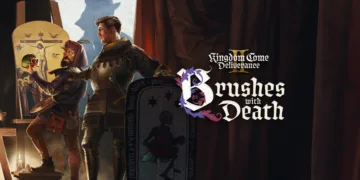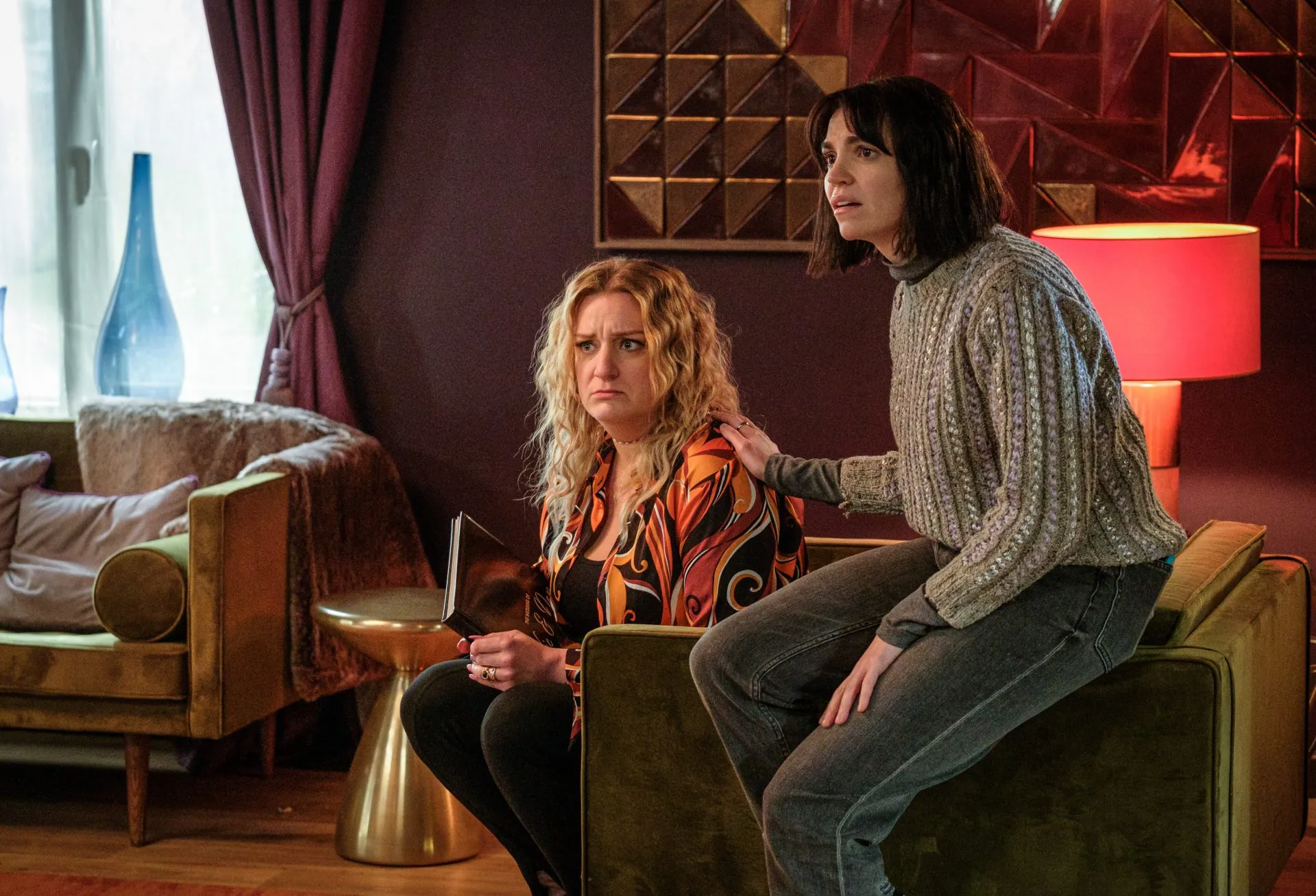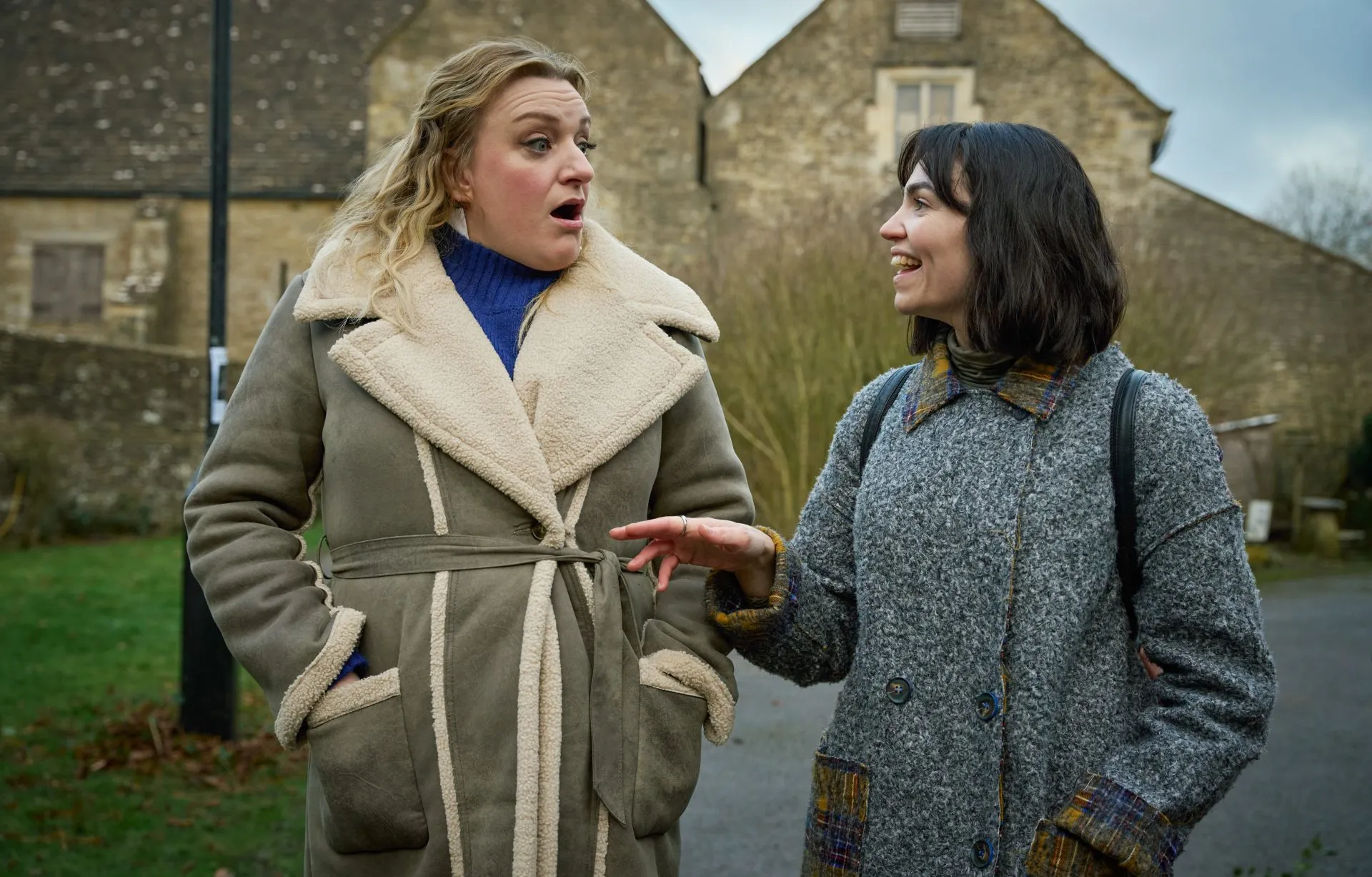Returning after a pause spanning two-and-a-half years, the series reappears with a renewed focus that stirs both tension and wit. Season 2 picks up immediately following the startling revelations of its predecessor, where a single misstep unraveled lives and ignited a series of dark transgressions.
The narrative revisits a world where a troubled protagonist must contend with the repercussions of a hidden betrayal, setting up a complex chain of events that questions personal morality and societal judgment.
Set against the backdrop of a rural village, the atmosphere carries a sense of old-world lore intertwined with modern dilemmas. This environment amplifies the mystery, as local customs and age-old superstitions color the fallout of past secrets. Characters find themselves navigating a maze of personal and communal stakes that mirror contemporary debates on accountability and trust.
The mood shifts rapidly between moments of surreal humor and stark dramatic tension, driven by abrupt scene changes and reflective flashbacks. The narrative structure aligns with current shifts in television storytelling, particularly on streaming platforms, where serialized enigmas meet pressing social concerns.
Through its multifaceted characters and thought-provoking dilemmas, the series offers a fresh perspective on cultural representation and social discourse in modern media.
Interwoven Narratives: Structure and Plot Development
The season adopts a non-linear approach that transforms the unfolding story into a multifaceted experience. Its technique of employing flashbacks alongside parallel storylines creates a layered effect, where scenes from past events emerge unexpectedly to challenge viewers’ assumptions.
The narrative picks up immediately following pivotal moments from the previous season, ensuring that the momentum carries forward while adding fresh dimensions to familiar conflicts. Structural choices—such as abrupt transitions between different time periods and sudden shifts in perspective—induce a mild sense of disorientation that mirrors the characters’ internal turmoil.
Pacing plays a critical role in maintaining tension throughout this installment. Fast-paced sequences, laden with rapid exchanges and unforeseen developments, are interspersed with more measured, reflective intervals that allow subtle hints and nuanced details to surface.
Threads involving the fallout of long-hidden secrets intertwine with new, emerging dangers that threaten to upend the established order. Multiple timelines operate side by side, enriching the suspense and inviting viewers to question the reliability of each unfolding scene.
Certain scenes stand out as turning points, effectively altering the course of the narrative. For instance, a chaotic memorial service scene and confined, tension-filled revelations serve as catalysts, spurring the plot into unexpected directions. These moments, rife with sudden twists, compel the audience to continuously reassess the characters’ motivations and the veracity of their actions.
The strategy of deliberately withholding full resolutions keeps questions alive and intensifies the ongoing suspense. In this way, the series uses its narrative framework to comment on contemporary issues surrounding secrecy and accountability. By blurring temporal lines and disrupting linear storytelling, the show offers a reflective mirror to current shifts in global media, challenging viewers to reinterpret familiar storytelling formats.
Character Dynamics and Performances: Tension and Transformation
At the center of this season is Nic, a figure whose evolution reveals both deep regret and moments of droll humor. Initially portrayed as a self-centered mother immersed in chaos, her journey now exposes the heavy cost of personal missteps.
Her portrayal oscillates between biting sarcasm and quiet moments of regret, capturing a woman burdened by past errors and striving to face their fallout. Several scenes capture this shift in a way that reflects a broader discussion on personal responsibility and the human condition, prompting viewers to reconsider familiar archetypes in contemporary storytelling.
Beside Nic stands Jen, an enigmatic companion whose actions speak in hushed tones. Her behavior, filled with unspoken motives and concealed histories, stirs a charged atmosphere in every scene she occupies. Moments of unguarded interaction with Nic provide glimpses into a complicated bond where affection intertwines with caution. The subtle references to Jen’s concealed experiences add a layer of complexity that invites reflection on the expectations of female solidarity in modern society.
Supporting roles contribute their own critical perspectives. Dan’s performance reveals a character who masks dubious intentions beneath a courteous veneer. His portrayal becomes a commentary on the dissonance between surface charm and underlying duplicity, hinting at societal pressures that encourage superficial kindness.
In contrast, young Ollie introduces a refreshing lightness; his spontaneous wit and unpredictable behavior bring moments of humor that alleviate the weight of the ongoing turmoil. His contributions, though fleeting, offer insight into the impact of familial pressures on the youth.
The interactions among these characters form a canvas for examining modern relationships and cultural shifts. The evolving dynamic between Nic and Jen—marked by reliance paired with deep-seated wariness—mirrors current debates about trust and authenticity in personal bonds.
Family ties, especially those strained by unspoken resentments and conflicting loyalties, emerge as a mirror for ongoing societal discussions about accountability and change. In presenting these multifaceted relationships, the series invites viewers to reconsider the nature of personal connection in an era where cultural norms continue to transform.
Genre-Blending, Tone, and Humor
This season intertwines a dark sense of irony with moments that evoke intense suspense. The narrative frequently surprises viewers by shifting abruptly from caustic humor to scenes filled with palpable tension. Such shifts reflect current trends in television where storytelling defies conventional genre confines, demanding that audiences remain alert and engaged throughout each episode.
Surreal sequences mark the series with moments that disrupt familiar settings. Ordinary backdrops are suddenly overlaid with unexpected events or cameo appearances by eccentric characters, crafting an atmosphere that oscillates between the bizarre and the serious. These peculiar interludes challenge standard depictions of everyday life and prompt reflection on how media can mirror and critique shifting cultural norms.
The dialogue, particularly the sharp and rapid-fire quips of the central character, layers humor in ways that serve both as a mirror to personal struggles and as a critique of prevailing societal expectations.
Witty repartee and ironic commentary infuse even the most tense scenes with a spark of levity, urging viewers to reconsider established ideas about identity and social roles. This approach, blending satire with narrative tension, invites the audience to view familiar issues from an unexpected perspective.
Humor often emerges as a counterpoint to mounting suspense, offering relief during intense moments while never compromising the gravity of the unfolding dilemmas. Occasional moments where humor meets menace underscore the series’ ability to entertain and provoke thought simultaneously.
This collision of hilarity and menace provides entertainment while inviting viewers to reflect on contradictions inherent in contemporary society. The approach encourages fresh takes on serialized drama, opening avenues for novel cultural expression on streaming services, and hints at shifts that may reshape how stories are told and experienced in future productions.
Themes and Underlying Motifs: Guilt, Betrayal, and Modern Disquiet
Guilt operates as a persistent force throughout the season, with past misdeeds casting long shadows over every decision. Characters struggle under the weight of their previous actions, a pressure that seeps into every conversation and choice. The sting of betrayal—especially within close personal ties—creates a tangled network of hidden motives and unspoken resentments, turning secrets into instruments of tension and emotional conflict.
The depiction of strained friendships and fractured family ties offers a stark look at life in a world where moral clarity is in short supply. Characters depend on one another even as they clash, exposing the precarious balance between mutual support and personal betrayal.
The series paints these relationships with a dual tone: humor surfaces in the midst of dysfunction, providing moments of relief amid the emotional intensity, while also spotlighting the inherent instability of such bonds in today’s shifting cultural climate.
Recurring symbols—disjointed flashbacks, snippets of recorded conversations, and suggestive objects—serve as visual markers that underscore these themes. Each motif acts as a quiet reminder of digital exposure and the unpredictable fallout of impulsive actions.
Their steady reappearance prompts a reflection on how personal histories and modern communication shape identity and interpersonal trust. Through these layers, the narrative scrutinizes the cost of secrecy and the lasting impact of individual errors in a time of rapid social change.
Production, Direction, and Visual Style: A Closer Examination
The director displays a skillful approach in orchestrating a narrative that shifts with agility across different timeframes. Flashbacks and concurrent storylines are interlaced with precision, establishing a rhythm that holds suspense while permitting brief moments for reflection.
The pacing, alternating between sharp, tension-filled sequences and quieter passages of character interaction, stands as evidence of careful narrative control. Each scene is arranged to prompt viewers to remain alert to both overt actions and subtle signals.
The visual composition of Season 2 is marked by a distinctive aesthetic. A deliberate choice of muted tones and contrasted lighting creates an atmosphere that mirrors the themes of isolation and moral ambiguity.
The rural village functions not simply as a backdrop but almost as an additional character; its timeworn architecture and shadowed landscapes reinforce an almost mythic quality. Camera angles and lens choices enhance this effect, capturing details that invite closer observation of every corner of the narrative space.
Production design contributes considerably to the immersive quality of the series. Costumes, props, and set elements are selected with care to reflect the era and the personality of each character. Guest roles and cameo appearances are integrated in ways that feel naturally rooted within the established world, indicating a deliberate commitment to a cohesive visual narrative.
Dialogue and script delivery are executed with precision, striking a balance between necessary exposition and energetic exchanges that reveal character depth and motivation. The use of sound and editing enriches the experience, ensuring that both the tension and occasional ironic humor are clearly discernible. This technical coordination results in a sensory encounter that is as visually compelling as it is emotionally charged.
The Review
Am I Being Unreasonable? Season 2
A daring and intricately crafted installment, Am I Being Unreasonable? Season 2 challenges conventional narrative structures with dark humor, a skillful mix of thriller and drama, and profound cultural insights. Its bold portrayal of complex relationships and moral ambiguities secures its place as an innovative series on modern streaming platforms. Even with moments of narrative disorientation, the season offers rich performances and a visual style that remains evocative and atmospheric.
PROS
- Skillful mix of dark humor and suspenseful thriller elements.
- Strong performances that bring well-rounded, evolving characters to life.
- Distinct visual style marked by evocative cinematography.
- Bold narrative techniques and creative storytelling.
CONS
- Non-linear narrative structure may perplex some viewers.
- Inconsistent pacing in parts of the season.
- Certain guest appearances can feel out of place.




















































